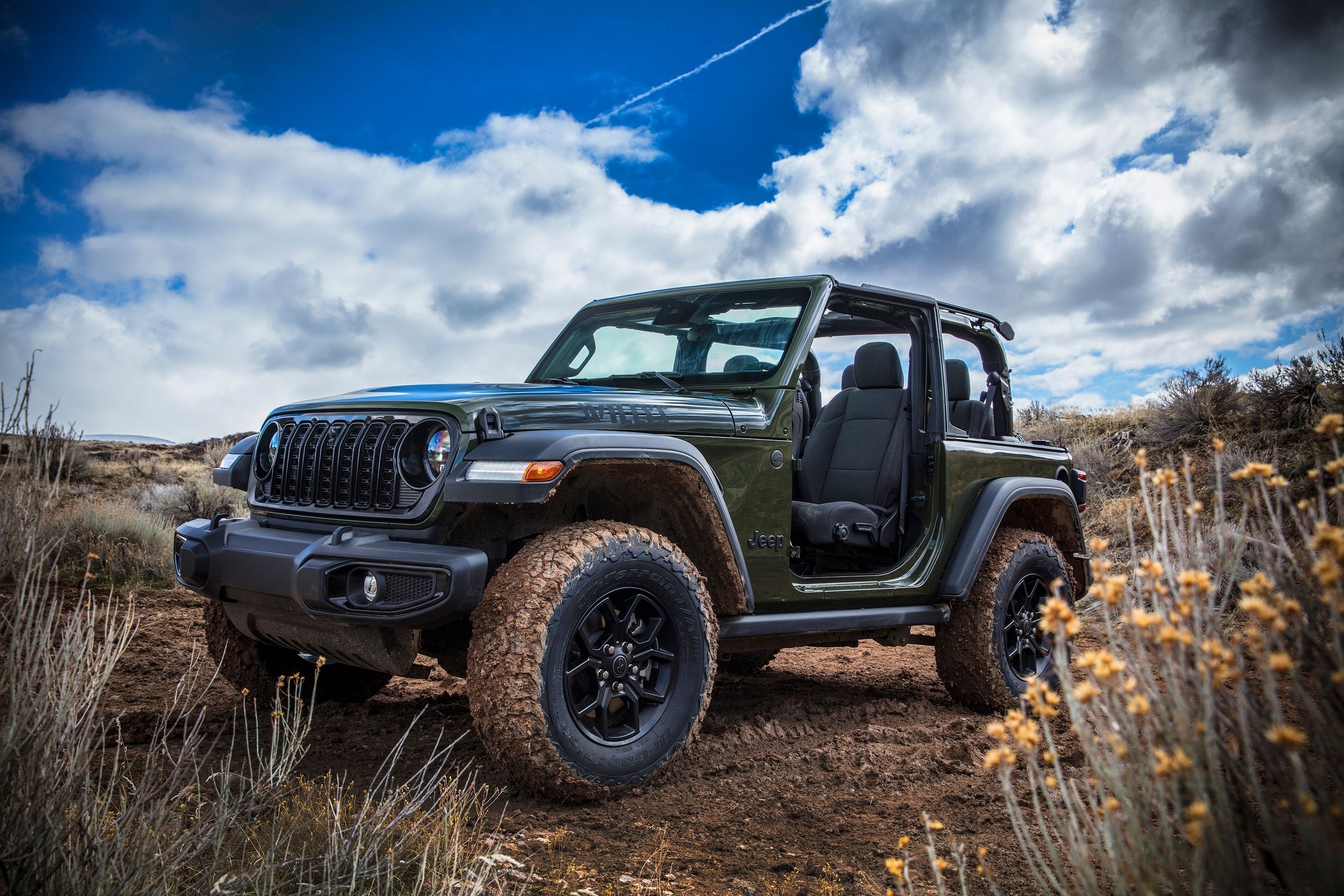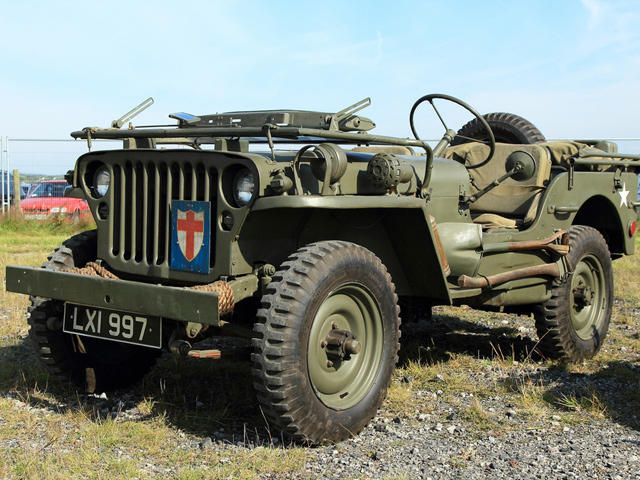
The Jeep Wrangler is the ultimate icon of off-road vehicles. It is a direct descendant of the WWII military vehicle built by Willys. But unlike the Hummer H1, it isn't simply a military vehicle made available to the public, and this is why the Wrangler gets an article and the H1 doesn't. The Wrangler has evolved significantly, but it never lost sight of its utilitarian roots, no matter what was going on with the rest of the company. The non-military version of the Jeep began in prototype form even before the war had ended.
From this time until 1987, when Jeep was bought by Chrysler, the vehicle which the Wrangler evolved from was known as the CJ, for "civilian Jeep". Early models were little different from military versions, with only a few extra considerations thrown in for the sake of practicality, and it's astonishing how much the current model has stayed true to the original. When Jeep was bought by Kaiser in 1953, the then-new CJ-3B was licensed to be built by other companies for different markets. Thus, the Mitsubishi Jeep was sold in Japan up until 1998, and the Indian version, built by Mahindra, is still in production today.
So successful, and not to mention capable, were the civilian models of the Jeep, that subsequent military models were based on the current civilian models, rather than the other way around. Chrysler renamed the CJ "Wrangler" when they acquired the Jeep brand in 1987, and they moved production from AMC's facility in Brampton, Ontario back to Jeep's historical homeland in Toledo, Ohio. It is this first generation to wear the Wrangler badge which represents the biggest shift from one generation to the next. CJ models had been remorselessly utilitarian, offering little that didn't help with off-roading.
But as emissions and safety regulations drove up the price of the vehicle, Chrysler recognized that fewer and fewer would be able to afford them as second vehicles, and changes would be needed to make the Wrangler palatable as a daily driver. A plusher interior, with such luxury appointments as cup holders, was added, as well as power steering and an automatic transmission. This practice of keeping the Wrangler somewhere between on-roader and off-roader has continued to this day, but don't think that means the Wrangler is some soft crossover. A bare bones trim level is still offered, as is the Rubicon dedicated off-road trim package.
Besides, the Wrangler is still more of a dedicated off-roader than nearly all of the competition anyway. There have been a number of variations of the CJ/Wrangler over the years, such as the Scrambler pickup of the early Eighties, and there is now a four-door version called the "Wrangler Unlimited". This model also has a military version, called the J8. Interestingly, the J8 isn't used by the US military, since it doesn't meet their emissions standards (seriously), and is instead sold to other militaries. Even the non-military Wrangler Unlimited is the preferred Wrangler model for those taking the vehicle off-road regularly.
The extra cargo space is helpful, and Jeep offers more options and equipment for the Unlimited than any other Wrangler model. Still more equipment is offered from Mopar, as well as from a fair number of aftermarket firms. As capable an off-roader as the Rubicon is, it can always be made even more capable. Lift kits are popular, since one of the first things done by Chrysler to make the Wrangler more road-happy was to lower the ride height. Brush guards and more dedicated off-road tires are similarly popular, and Jeep does a good job of making the Wrangler easy to modify to meet your needs.
An expanded product line means that those who want a Jeep exclusively for the road can now find one elsewhere, and the compromises made for the Wrangler have never been too extreme. They do weigh more than ever before, but the engines are also more powerful than ever, and Wrangler owners rarely see the vehicle as wanting for power. An interesting, and appealing, quality of the Wrangler is how well it holds its resale value. It has been recognized by numerous publications as one of the best vehicles for sales today in terms of its ability to hold resale value. Sales are as strong as ever, and the future of the Wrangler is fairly secure.
The Wrangler's heritage is doubtless a factor in its having become such an icon, but it is still important to remember that it wouldn't have been able to maintain this status if it weren't also a great vehicle. It is likely that the Wrangler will continue on the same path as it has always been for many more years to come, as it is a difficult vehicle to find fault with.

